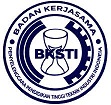Lean ergonomics: A three-dimensional analysis of progress, practical challenges, and prospective research
Abstract
Keywords
Full Text:
PDFReferences
A. Pearce, D. Pons, and T. Neitzert, “Understanding Lean—Statistical Analysis of Perceptions and Self-Deception Regarding Lean Management,” Operations Research Forum, vol. 4, no. 2, Jun. 2023, doi: 10.1007/s43069-023-00198-4.
M. Dieste, A. Baseggio, R. Panizzolo, and S. Biazzo, “Lean Thinking and Workplace Safety: insights from two improvement projects,” in Proceedings of the International Conference on Industrial Engineering and Operations Management Dubai, UAE, 2020.
H. Vinoth Kumar, S. Annamalai, and N. Bagathsingh, “Impact of lean implementation from the ergonomics view: A research article,” in Materials Today: Proceedings, Elsevier Ltd, 2019, pp. 9610–9612. doi: 10.1016/j.matpr.2020.07.113.
T. Sakthi Nagaraj and R. Jeyapaul, “An empirical investigation on association between human factors, ergonomics and lean manufacturing,” Production Planning and Control, vol. 32, no. 16, pp. 1337–1351, 2021, doi: 10.1080/09537287.2020.1810815.
E. Psomas and J. Antony, “Research gaps in Lean manufacturing: a systematic literature review,” Apr. 18, 2019, Emerald Group Holdings Ltd. doi: 10.1108/IJQRM-12-2017-0260.
A. Hamja, M. Maalouf, and P. Hasle, “The effect of lean on occupational health and safety and productivity in the garment industry–a literature review,” Prod Manuf Res, vol. 7, no. 1, pp. 316–334, Jan. 2019, doi: 10.1080/21693277.2019.1620652.
M. López-Acosta, S. García-Vilches, J. M. Velarde-Cantú, and A. Chacara-Montes, “Implementation of the lean ergonomics approach to process performance improvement,” Journal of Microfinance Planning and Control, vol. 5, no. 15, pp. 10–21, Jun. 2019, doi: 10.35429/jmpc.2019.15.5.10.21.
J. G. Brawner, G. A. Harris, and G. A. Davis, “Will the real relationship between lean and safety/ergonomics please stand up?,” Apr. 01, 2022, Elsevier Ltd. doi: 10.1016/j.apergo.2021.103673.
D. Dominguez-Alfaro, I. Mendoza-Muñoz, M. I. Montoya-Reyes, C. R. Navarro-González, S. E. Cruz-Sotelo, and O. Y. Vargas-Bernal, “Ergovsm: A new tool that integrates ergonomics and productivity,” Journal of Industrial Engineering and Management-JIEM, vol. 14, no. 3, pp. 552–569, 2021, doi: 10.3926/jiem.3507.
M. Brito, M. Vale, J. Leão, L. P. Ferreira, F. J. G. Silva, and M. A. Gonçalves, “Lean and Ergonomics decision support tool assessment in a plastic packaging company,” in Procedia Manufacturing, Elsevier B.V., 2020, pp. 613–619. doi: 10.1016/j.promfg.2020.10.086.
P. N. Neag, L. Ivascu, A. Mocan, and A. Draghici, “Ergonomic intervention combined with an occupational and organizational psychology and sociology perspectives in production systems,” MATEC Web of Conferences, vol. 305, p. 00031, 2020, doi: 10.1051/matecconf/202030500031.
J. C. Sá, L. Soares, J. Dinis-Carvalho, F. J. G. Silva, and G. Santos, “Assessment of the Impact of Lean Tools on the Safety of the Shoemaking Industry,” Safety, vol. 9, no. 4, p. 70, Oct. 2023, doi: 10.3390/safety9040070.
H. Vinoth Kumar, S. Annamalai, and N. Bagathsingh, “Impact of lean implementation from the ergonomics view: A research article,” in Materials Today: Proceedings, Elsevier Ltd, 2019, pp. 9610–9612. doi: 10.1016/j.matpr.2020.07.113.
A. Hamja, M. Maalouf, and P. Hasle, “The effect of lean on occupational health and safety and productivity in the garment industry–a literature review,” Prod Manuf Res, vol. 7, no. 1, pp. 316–334, Jan. 2019, doi: 10.1080/21693277.2019.1620652.
T. Sakthi Nagaraj and R. Jeyapaul, “An empirical investigation on association between human factors, ergonomics and lean manufacturing,” Production Planning and Control, vol. 32, no. 16, pp. 1337–1351, 2021, doi: 10.1080/09537287.2020.1810815.
B. Rathore, A. K. Pundir, R. Iqbal, and R. Gupta, “Development of fuzzy based ergonomic-value stream mapping (E-VSM) tool: a case study in Indian glass artware industry,” Production Planning and Control, 2022, doi: 10.1080/09537287.2022.2035447.
M. Brito, M. Vale, J. Leão, L. P. Ferreira, F. J. G. Silva, and M. A. Gonçalves, “Lean and Ergonomics decision support tool assessment in a plastic packaging company,” in Procedia Manufacturing, Elsevier B.V., 2020, pp. 613–619. doi: 10.1016/j.promfg.2020.10.086.
R. L. Ochoa-Vásquez, F. A. Ucañay-Barreto, and J. M. Castillo-Tejada, “Proposed Model for the Reduction of Overweight in Table Grape Packaging with Lean Manufacturing and Ergonomics Techniques in an Agro-Industrial Company,” in ACM International Conference Proceeding Series, Association for Computing Machinery, Sep. 2022, pp. 351–357. doi: 10.1145/3568834.3568920.
A. Zaalouk, S. Han, and P. D. Student, “Lean-Based Integrated Approach for Manual Work Design Optimization in Modular Construction,” 2022.
T. Melo, A. C. Alves, I. Lopes, and A. Colim, “Reducing 3M by Improved Layouts and Ergonomic Intervention in a Lean Journey in a Cork Company,” in Studies in Systems, Decision and Control, vol. 277, Springer Science and Business Media Deutschland GmbH, 2020, pp. 537–545. doi: 10.1007/978-3-030-41486-3_58.
A. C. Peixoto, J. Dinis-Carvalho, A. Colim, N. Sousa, L. A. Rocha, and J. Oliveira, “WIDEA: Waste Identification Diagram with Ergonomic Assessment—Towards the Integration of Lean and Ergonomics,” in Studies in Systems, Decision and Control, vol. 406, Springer Science and Business Media Deutschland GmbH, 2022, pp. 443–453. doi: 10.1007/978-3-030-89617-1_40.
Y. Kose, H. N. Civan, E. Ayyildiz, and E. Cevikcan, “An Interval Valued Pythagorean Fuzzy AHP–TOPSIS Integrated Model for Ergonomic Assessment of Setup Process under SMED,” Sustainability (Switzerland), vol. 14, no. 21, Nov. 2022, doi: 10.3390/su142113804.
V. Bittencourt, M. Buchbinder, D. Saakes, and S. Thiede, “Integrated lean and ergonomic assessment for the planning of human-centered factories,” in Procedia CIRP, Elsevier B.V., 2023, pp. 344–349. doi: 10.1016/j.procir.2023.08.061.
B. Rathore, A. K. Pundir, R. Iqbal, and R. Gupta, “Development of fuzzy based ergonomic-value stream mapping (E-VSM) tool: a case study in Indian glass artware industry,” Production Planning and Control, vol. 34, no. 16, pp. 1618–1638, 2023, doi: 10.1080/09537287.2022.2035447.
A. Amjad, S. Ikramullah Butt, M. H. Agha, A. Ahmad, F. Zhang, and S. Ahmad, “Integrating Ergonomics and sustainability: A framework with LDA methodology and implementation roadmap,” Technol Soc, vol. 75, Nov. 2023, doi: 10.1016/j.techsoc.2023.102369.
M. Brito and M. A. Gonçalves, “ErgoSMED: A Methodology to Reduce Setup Times and Improve Ergonomic Conditions,” in Advances in Intelligent Systems and Computing, Springer Verlag, 2020, pp. 549–554. doi: 10.1007/978-3-030-27928-8_83.
J. C. Quiroz-Flores, C. Cepeda-Zavala, E. Terry-Alba, and S. Nallusamy, “A Proposed Lean Approach Model to Increase the Operational Efficiency of Natural Gas Connection Installations in Metropolitan Lima,” SSRG International Journal of Civil Engineering, vol. 10, no. 6, pp. 1–8, 2023, doi: 10.14445/23488352/IJCE-V10I6P101.
D. Domínguez-Alfaro, I. Mendoza-Muñoz, M. I. Montoya-Reyes, O. Y. Vargas-Bernal, and G. Jacobo-Galicia, “Design and Implementation of Integral Ergo-Value Stream Mapping in a Metal-Mechanical Company to Improve Ergonomic and Productive Conditions: A Case Study,” Logistics, vol. 7, no. 4, Dec. 2023, doi: 10.3390/logistics7040100.
D. Schwerha, A. Casey, and N. Loree, “Development of a system to integrate safety, productivity, and quality metrics for improved communication and solutions,” Saf Sci, vol. 129, Sep. 2020, doi: 10.1016/j.ssci.2020.104765.
H. Vinoth Kumar and Sivakumar Annamalai, “Integrating ergonomic factors with waste identification diagram to enhance operator performance and productivity in the textile industry,” TRANSACTIONS OF FAMENA XLVI-1, 2022.
R. Lakshmanan, P. Nyamekye, V.-M. Virolainen, and H. Piili, “The convergence of lean management and additive manufacturing: Case of manufacturing industries,” Clean Eng Technol, vol. 13, p. 100620, 2023, doi: 10.1016/j.clet.2023.100620.
M. Ewnetu and Y. Gzate, “Assembly operation productivity improvement for garment production industry through the integration of lean and work-study, a case study on Bahir Dar textile share company in garment, Bahir Dar, Ethiopia,” Heliyon, vol. 9, no. 7, Jul. 2023, doi: 10.1016/j.heliyon.2023.e17917.
M. B. Purushothaman, J. Seadon, and D. Moore, “A relationship between bias, lean tools, and waste,” International Journal of Lean Six Sigma, vol. 13, no. 4, pp. 897–936, Jul. 2022, doi: 10.1108/IJLSS-03-2021-0045.
R. Coetzee, C. Jonker, K. van der Merwe, and L. van Dyk, “The South African perspective on the lean manufacturing respect for people principles,” SA Journal of Industrial Psychology, vol. 45, 2019, doi: 10.4102/sajip.v45i0.1613.
S. Vukadinovic, I. Macuzic, M. Djapan, and M. Milosevic, “Early management of human factors in lean industrial systems,” Saf Sci, vol. 119, pp. 392–398, Nov. 2019, doi: 10.1016/j.ssci.2018.10.008.
M. Brito and M. A. Gonçalves, “ErgoSMED: A Methodology to Reduce Setup Times and Improve Ergonomic Conditions,” in Advances in Intelligent Systems and Computing, Springer Verlag, 2020, pp. 549–554. doi: 10.1007/978-3-030-27928-8_83.
D. Alves, L. P. Ferreira, T. Pereira, J. C. Sá, F. J. G. Silva, and N. O. Fernandes, “Analysis and improvement of the packaging sector of an industrial company,” in Procedia Manufacturing, Elsevier B.V., 2020, pp. 1327–1331. doi: 10.1016/j.promfg.2020.10.185.
DOI: http://dx.doi.org/10.62870/jiss.v10i2.28793
Refbacks
- There are currently no refbacks.
 is supported by
is supported by








